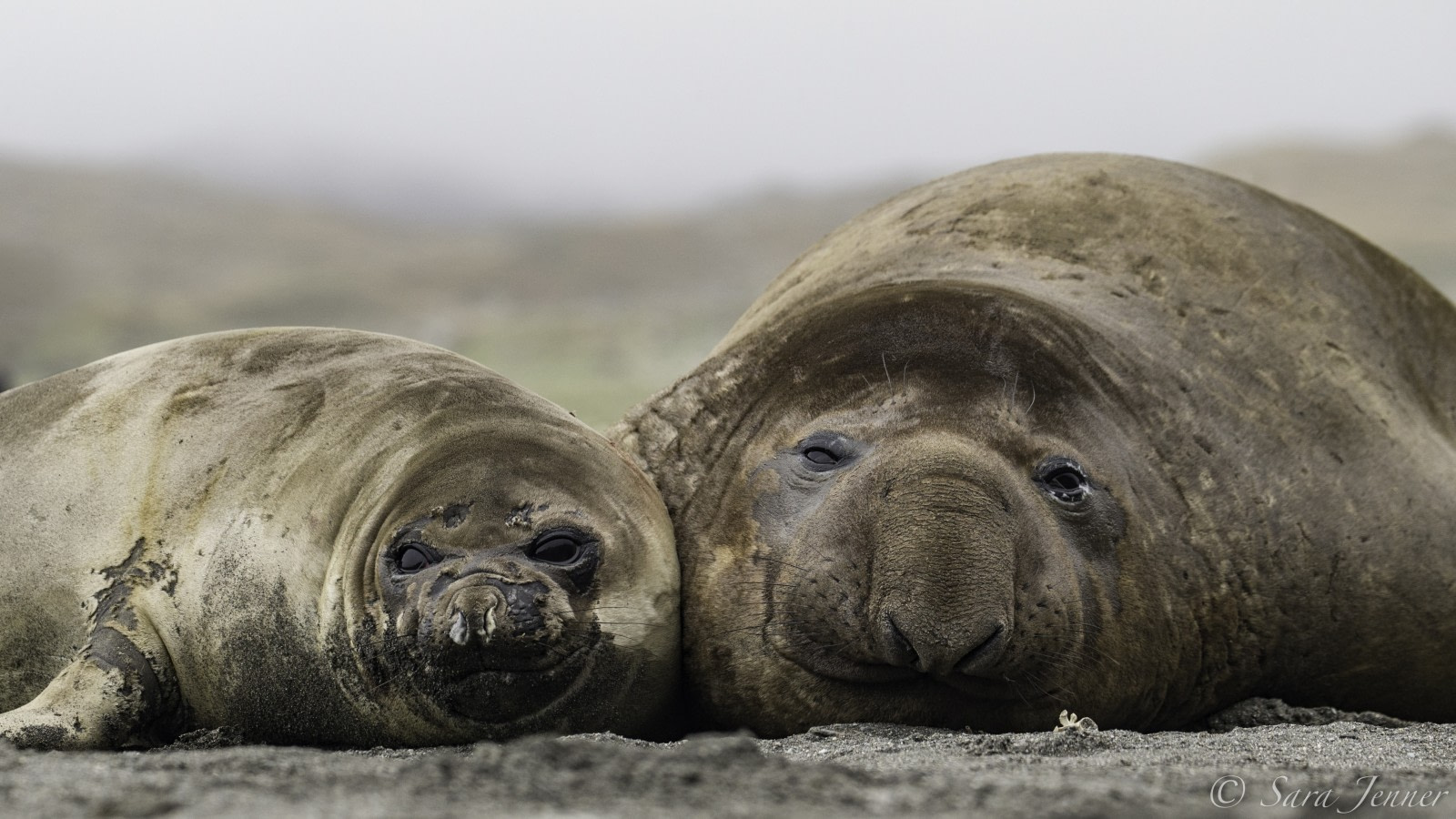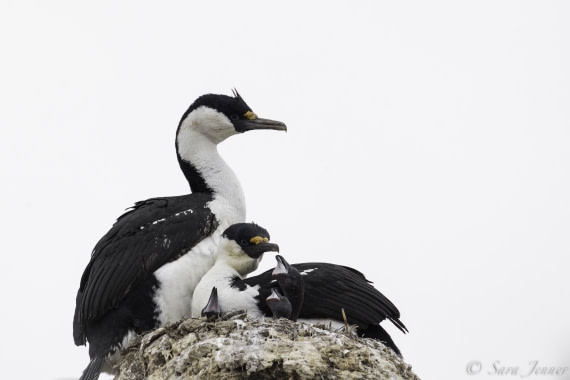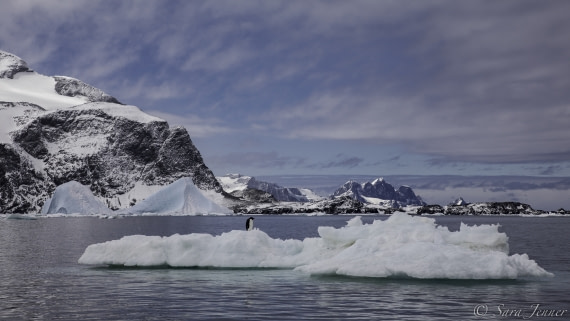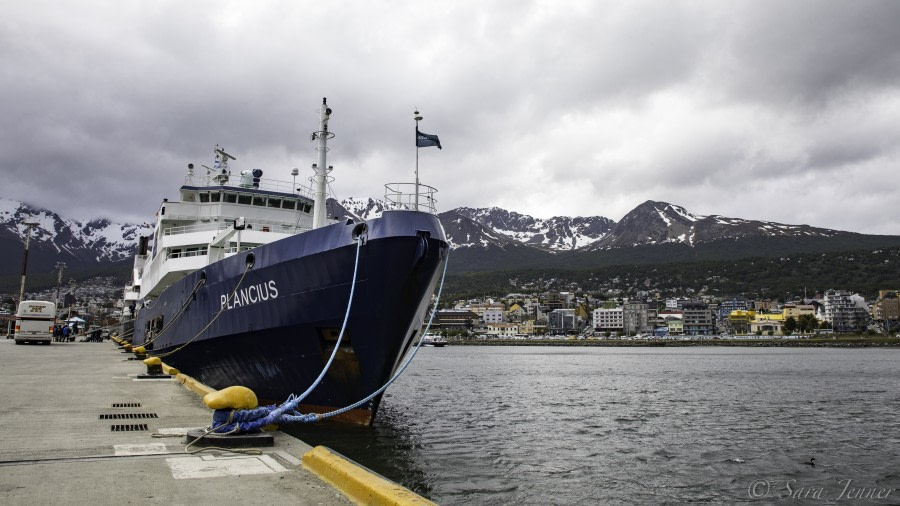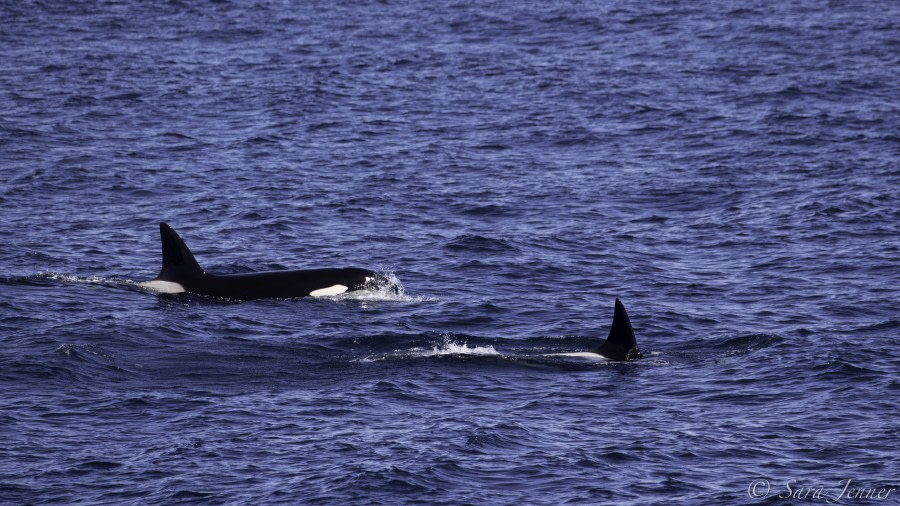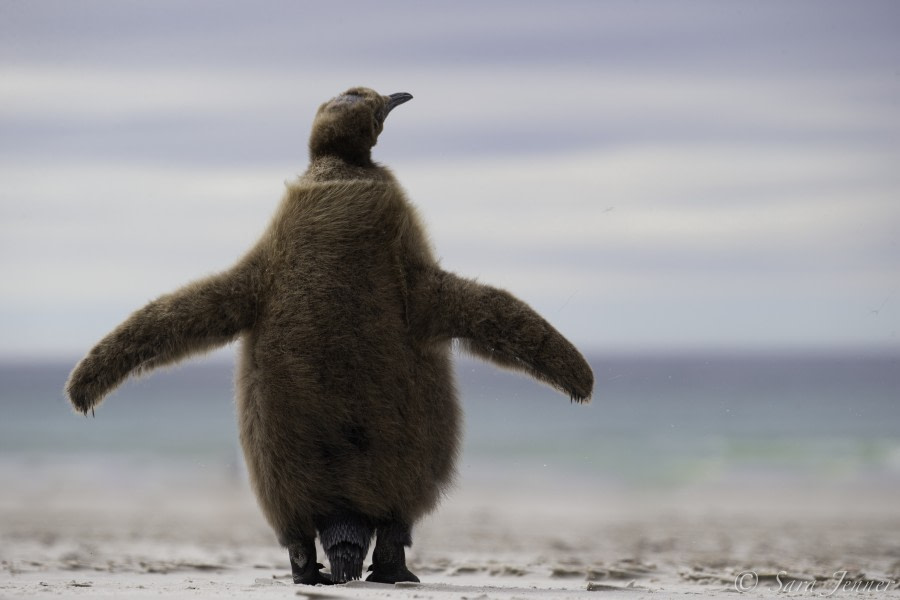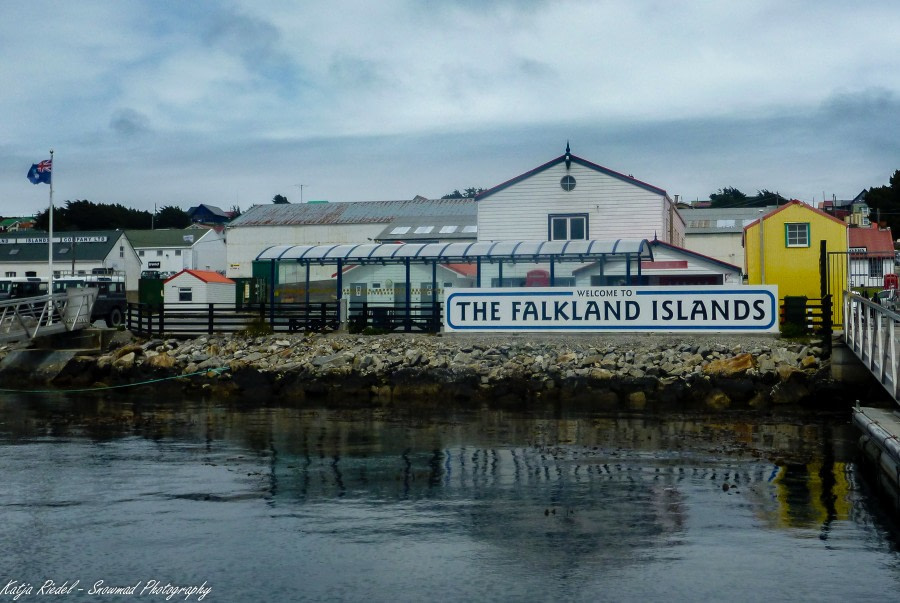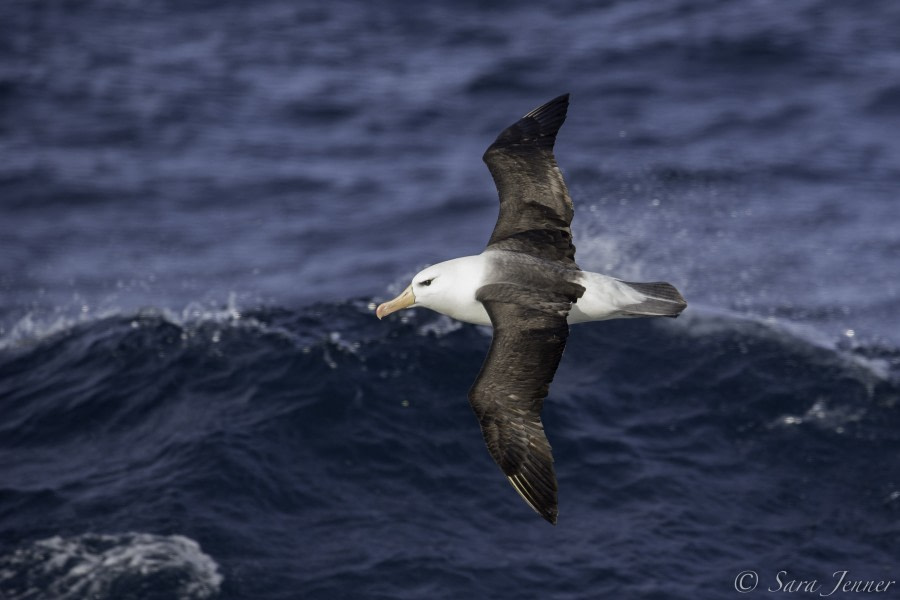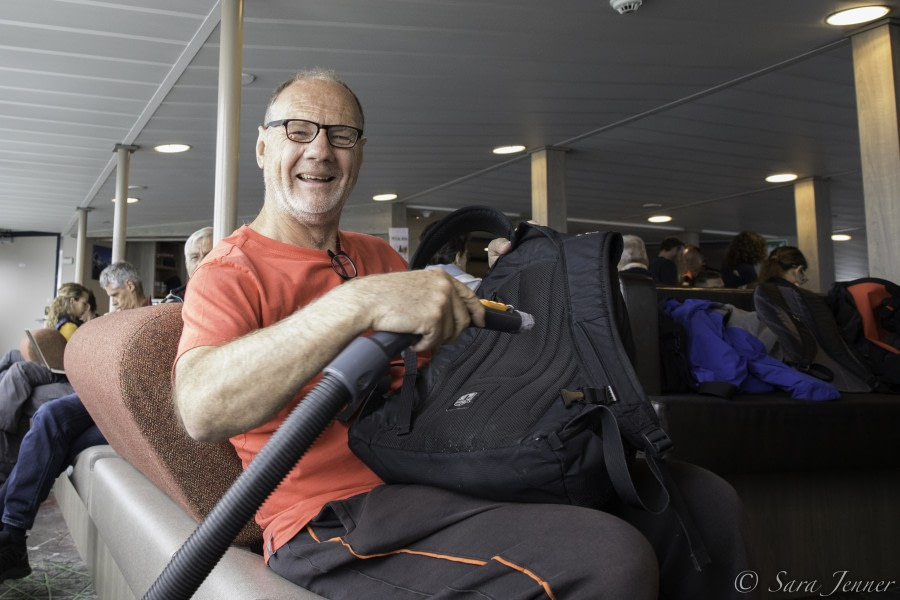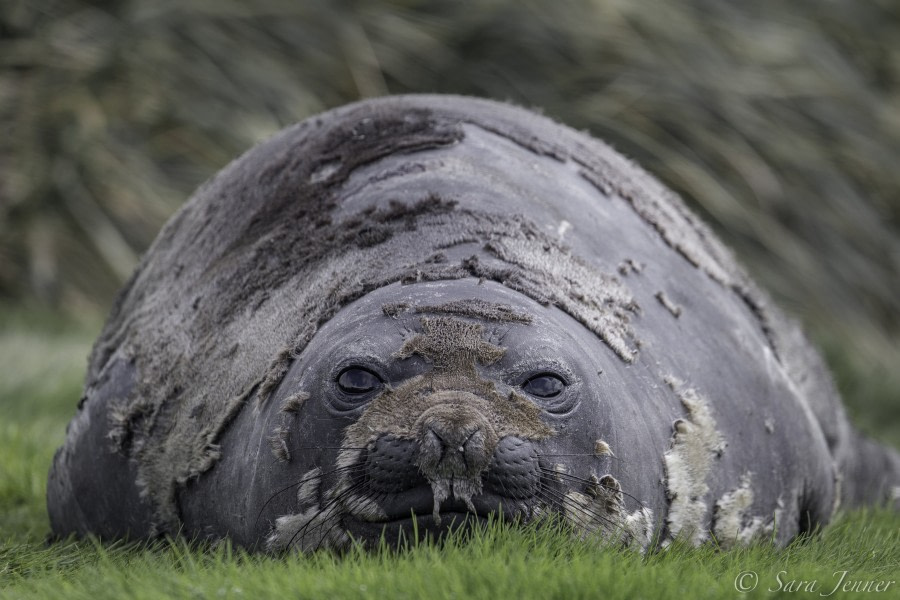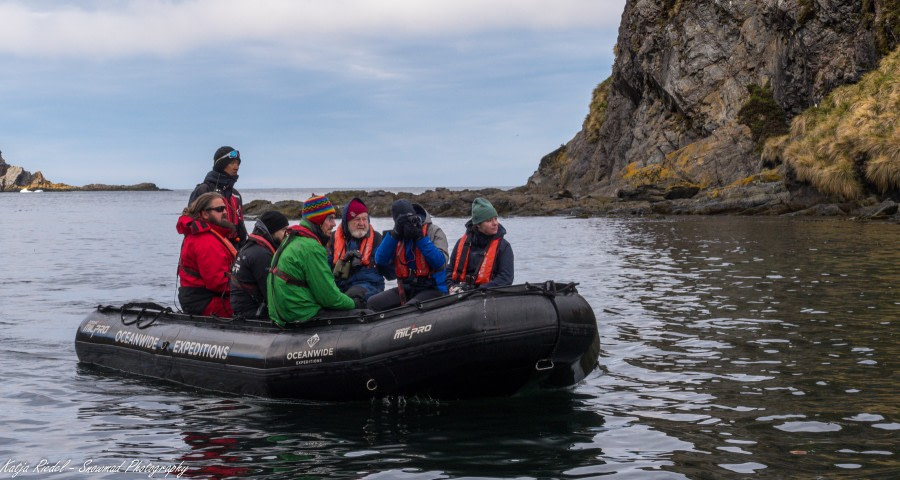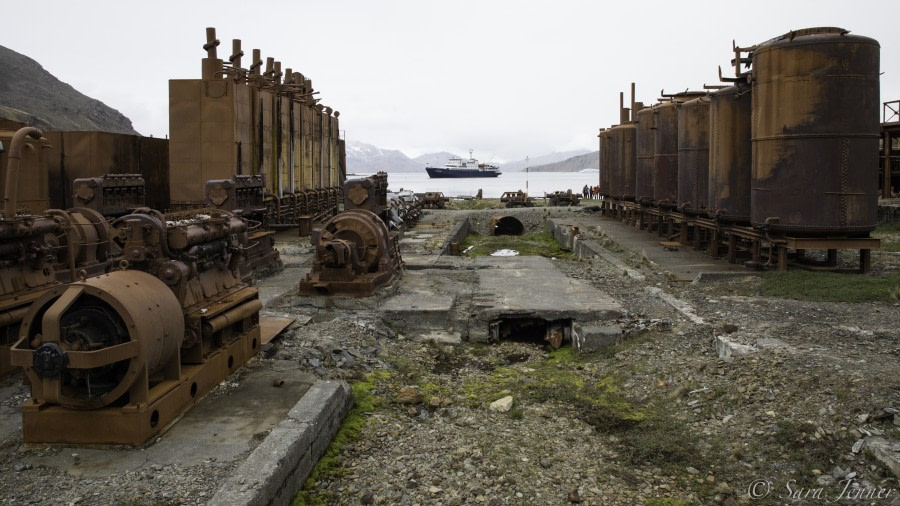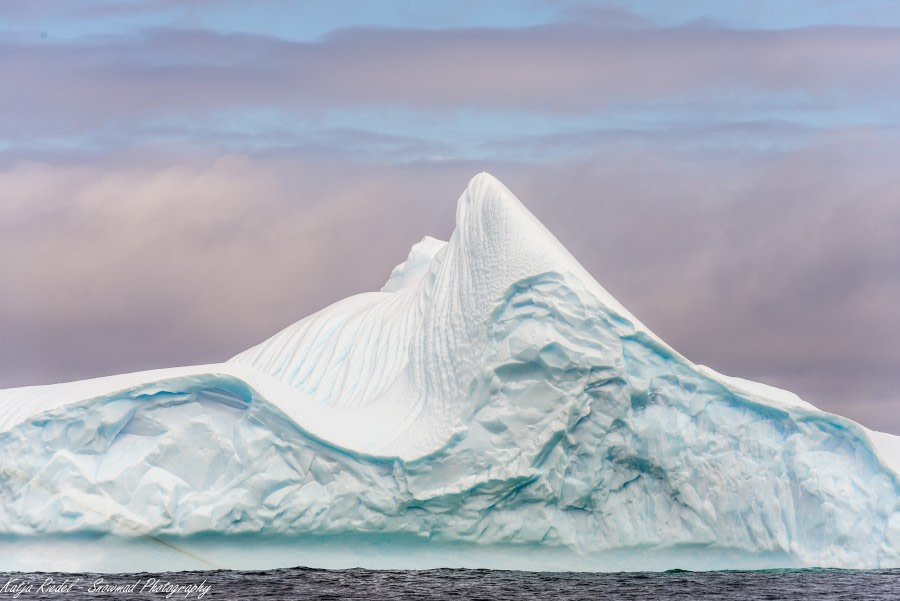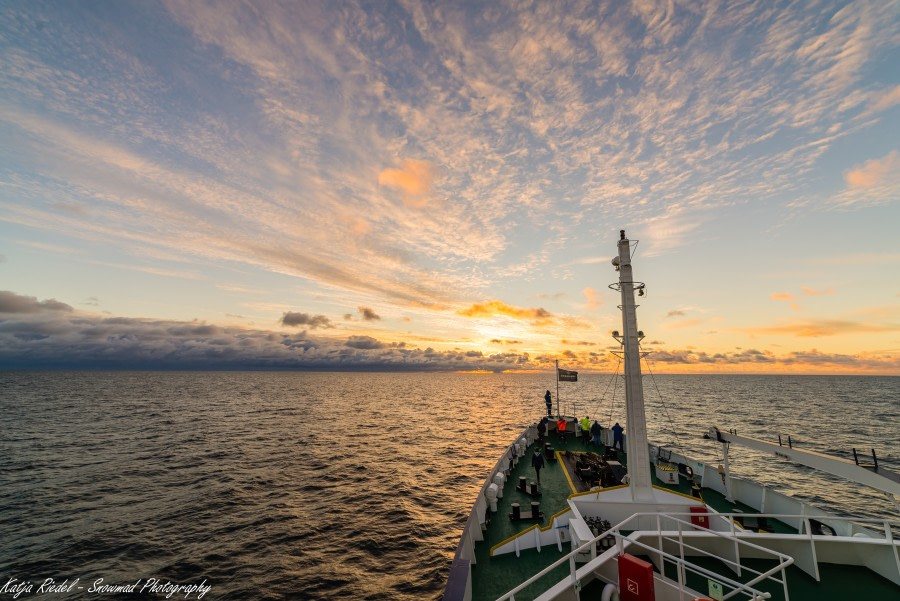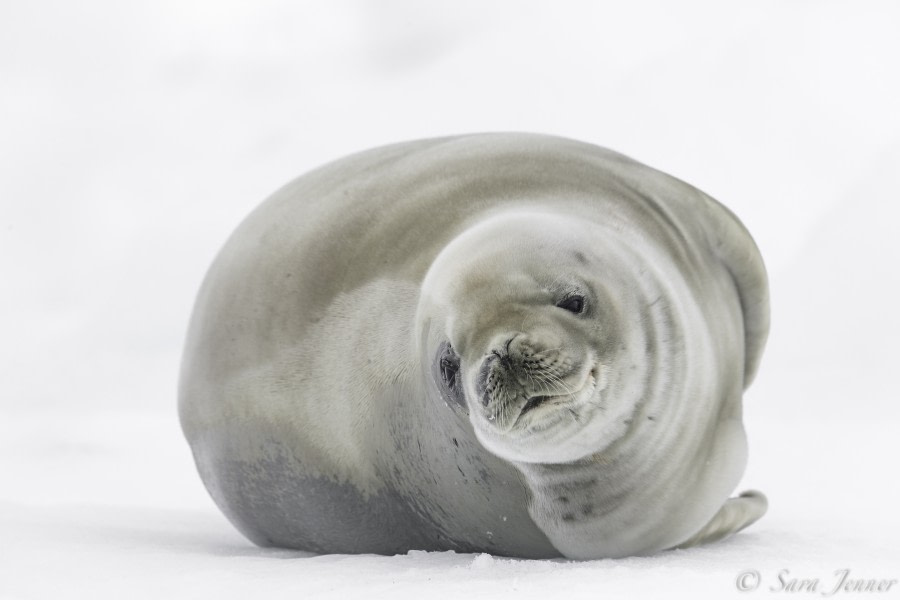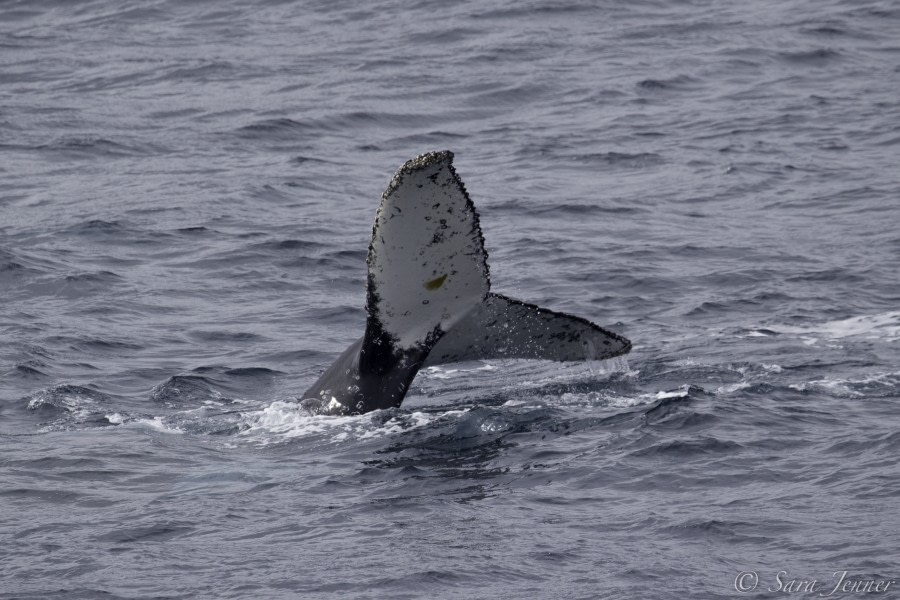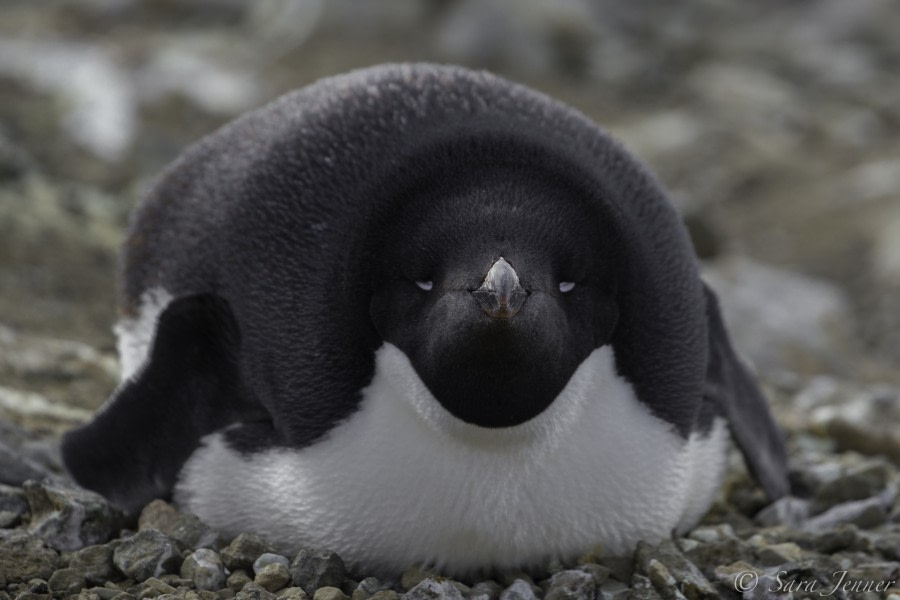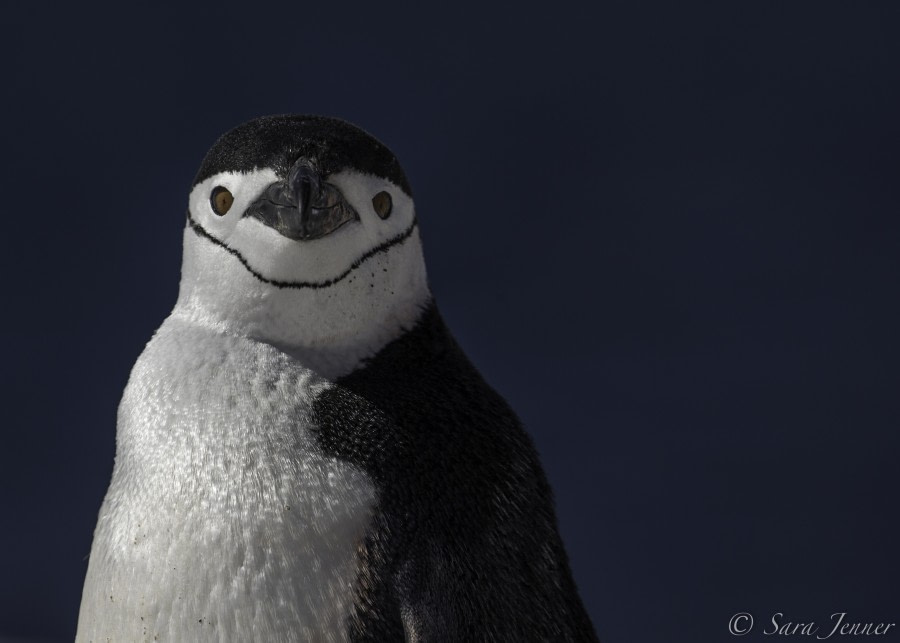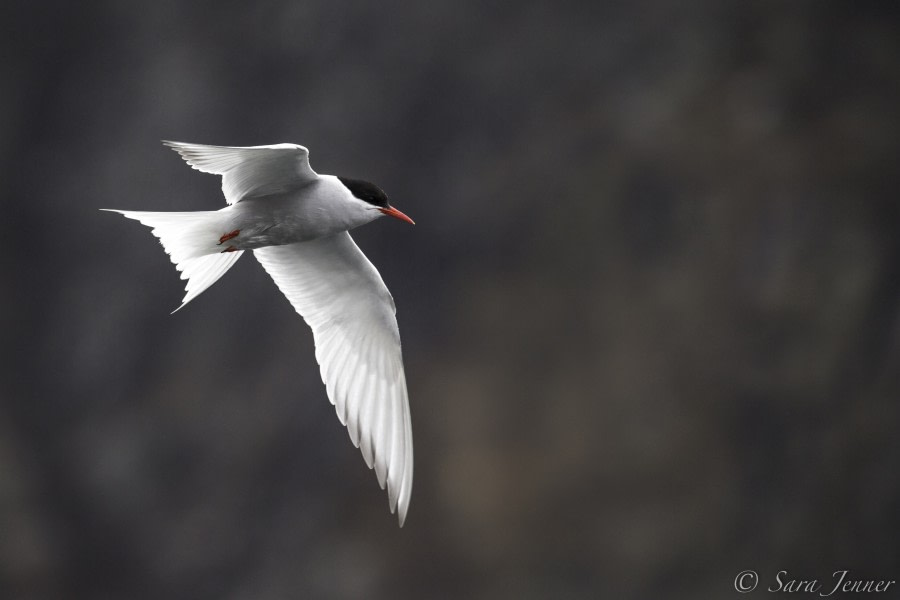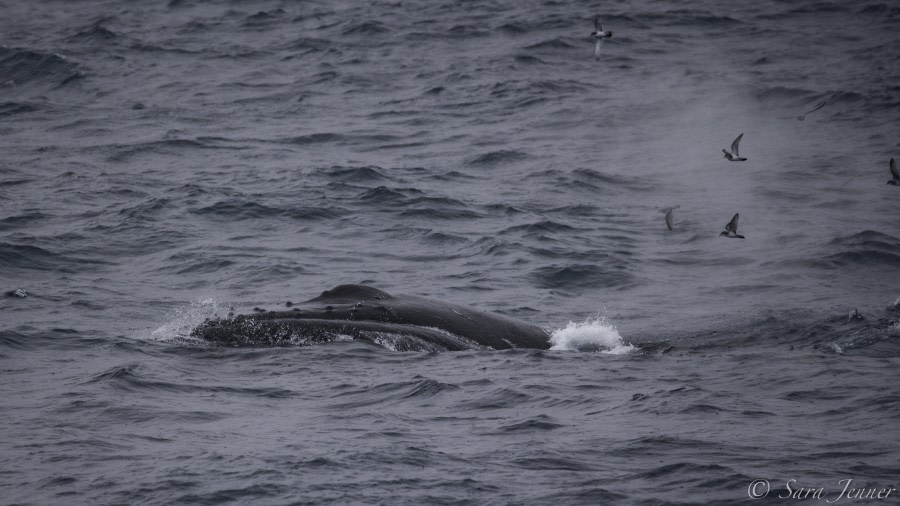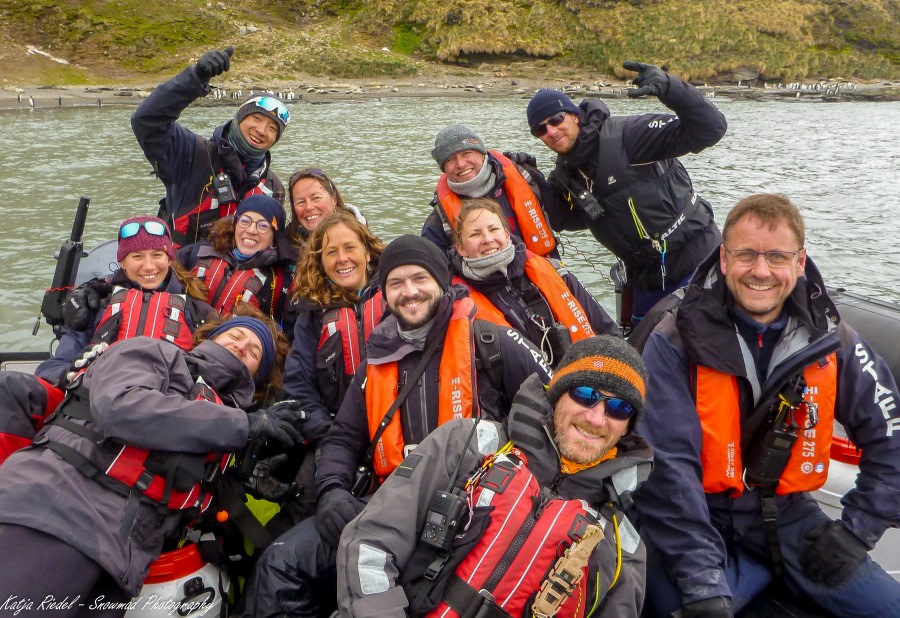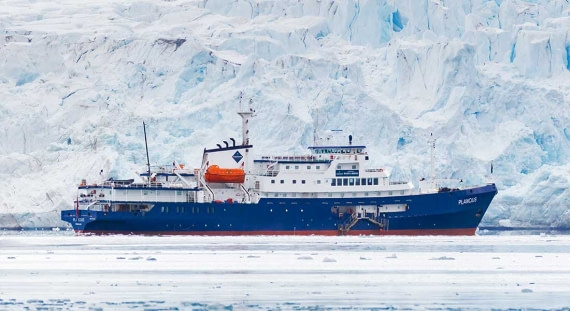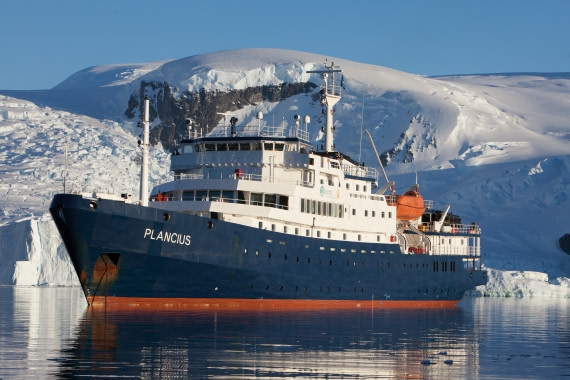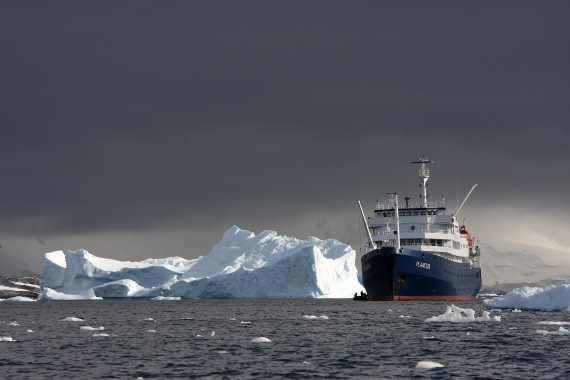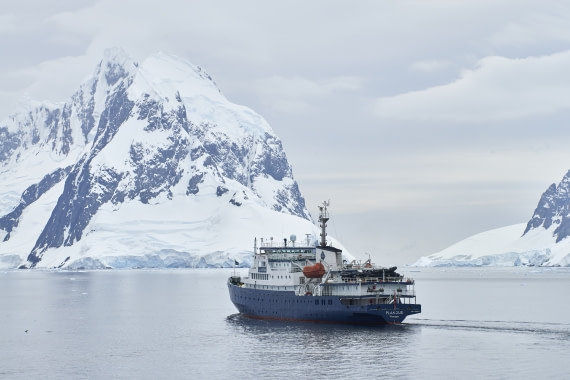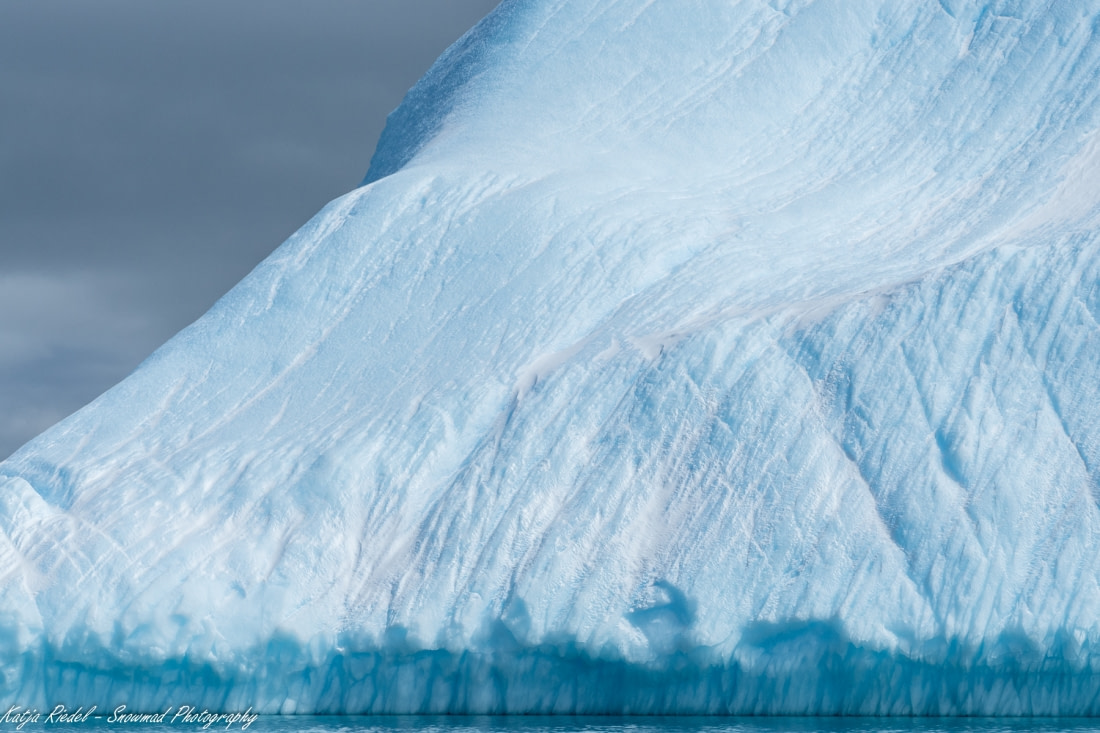| Fecha: | 30.11.2019 |
| Posición: | 42°45'.7 S, 65°01'.4 W |
Pasamos días soñando con el viaje que nos esperaba, horas comprando, leyendo, preparando la logística, charlando animadamente con familiares, amigos, colegas y vecinos sobre nuestra atípica elección de viaje, luego pasamos horas, días, viajando en aviones, coches, autobuses... Así pues, cada uno tenía su pequeño escenario sobre cómo sería nuestra llegada a bordo del Plancius... pero desde luego ninguno de nosotros había imaginado éste. Tampoco Ali, nuestra Jefa de Expedición. Su figura rubia y estilizada nos recibió en el muelle de Ushuaia... con malas noticias: debido a un problema médico que se había producido durante el crucero anterior, la salida se retrasaría... o quizás peor aún, ¡se cancelaría! En ese momento, nuestro crucero estaba en manos de las autoridades argentinas, y lo único que podíamos hacer era esperar. Pero, afortunadamente y tras una hora bastante estresante, nos autorizaron a entrar en el muelle. Aliviados, vimos por primera vez al Plancius. Nos esperaba tranquilamente entre otros barcos de expedición, el más pequeño, pero el más fiero. Su casco azul brillante contrastaba con las aguas grises del canal de Beagle, y subimos a bordo orgullosos, recibidos por un cálido "¡bienvenidos a bordo!" de los miembros de la tripulación que se ocuparon de nuestro equipaje y nos indicaron el camino a nuestros camarotes. Enseguida empezamos a explorar el barco, recorriendo pasillos y cubiertas, emocionados como niños que descubren un nuevo patio de recreo. Rápidamente encontramos el camino hacia el restaurante, la recepción, el puente o el salón del observatorio. Nos reunimos en este último para asistir a una sesión informativa obligatoria sobre seguridad impartida por nuestro oficial jefe, François, y a una breve presentación del equipo de expedición. Ali, nuestra jefa de expedición, es británica. Antes de trabajar a bordo de buques de expedición, fue maestra de escuela y miembro del departamento de conservación de las Islas Malvinas durante 15 años Daniel, de Alemania, es el ayudante de Ali. Radicado principalmente en Islandia, Daniel pasa la mayor parte del tiempo trabajando como guía naturalista por todo el mundo. El resto del equipo está formado por Joachem, glaciólogo de los Países Bajos, Katja, investigadora y guía alemana especializada en química atmosférica, que tendrá la difícil tarea de traducir todos los documentos y conferencias al alemán, Jerry, de China, antiguo consultor internacional de viajes que se ha convertido en guía internacional de viajes, Sara, extraordinaria fotógrafa de vida salvaje originaria del Reino Unido, Marie, investigadora francesa en biología evolutiva y del desarrollo, y Rustyn, de EE.UU., pero afincado en la Patagonia, donde regenta un albergue para mochileros. El equipo se completa con buceadores especializados que acompañarán a algunos de nosotros para descubrir la vida submarina polar: Jerry, Catherine, Chris (los tres del Reino Unido) y Chloé (de Francia). ¡Menudo equipo internacional! Todos sus miembros son "bipolares": estos apasionados, gravemente infectados por el infame virus polar, ¡pasan la mayor parte del tiempo saltando de un polo a otro! Un simulacro, necesaria simulación de la evacuación del barco en caso de emergencia, sigue a la presentación de François. Debido al retraso de la salida, se informa de la presentación de la vida a bordo por parte de la gerente de nuestro hotel, Zsuzsanna, y se nos comunica que Nick, el médico del barco, se quedará después de la cena para distribuir pastillas contra el mareo. Surgen los debates: ¿tomar medicinas o no tomarlas? Esa es la cuestión.
